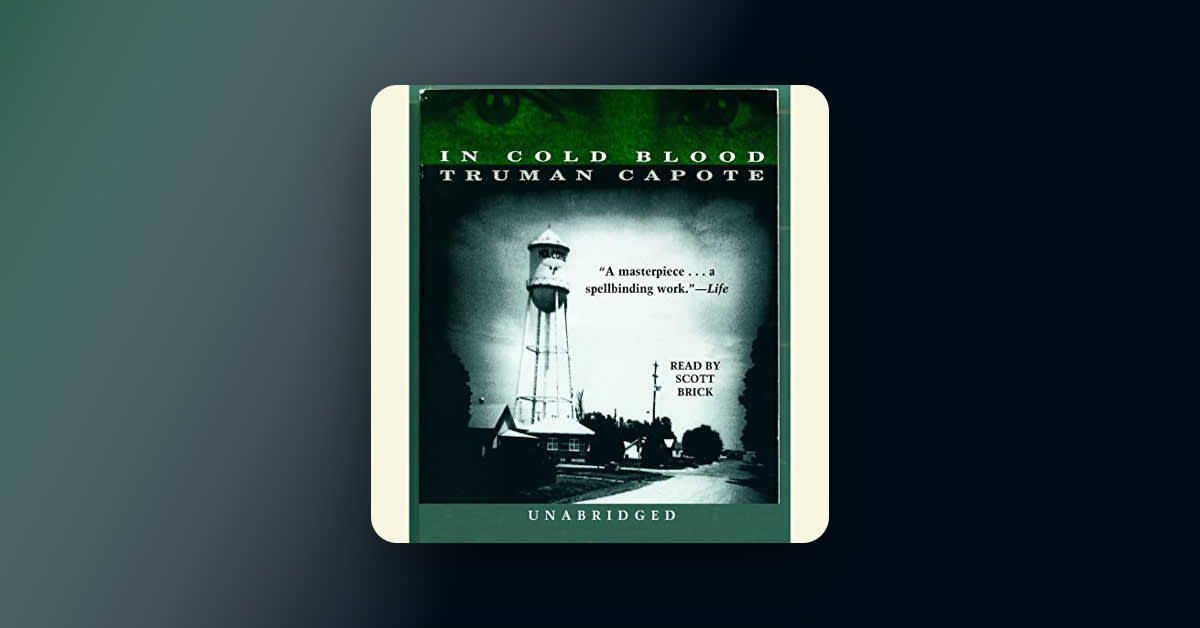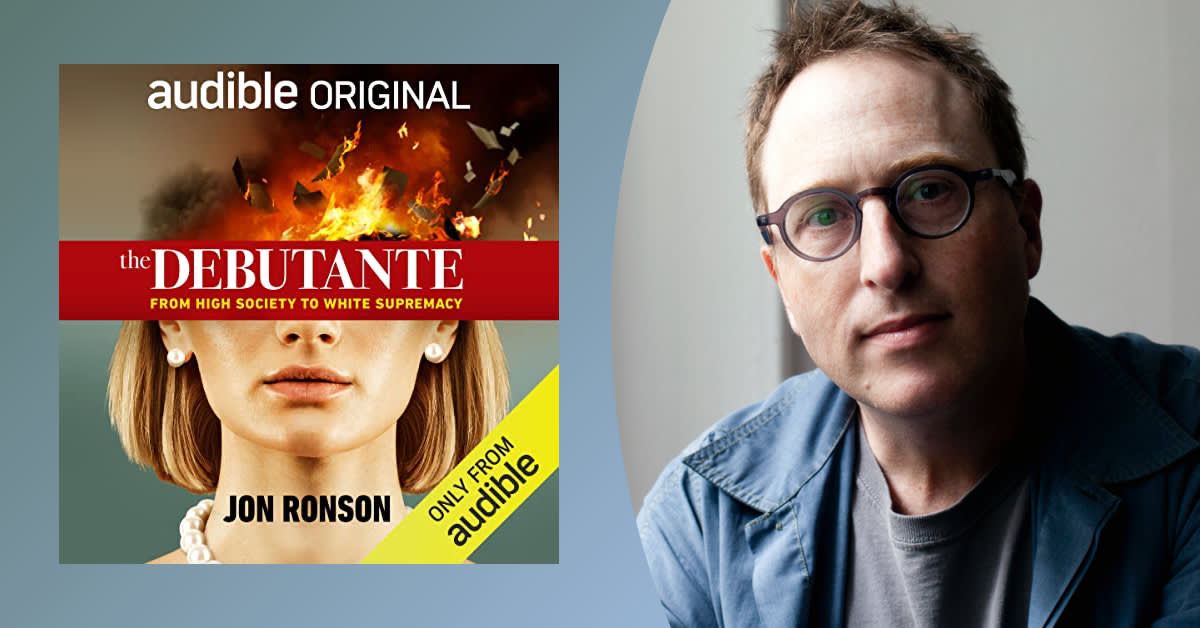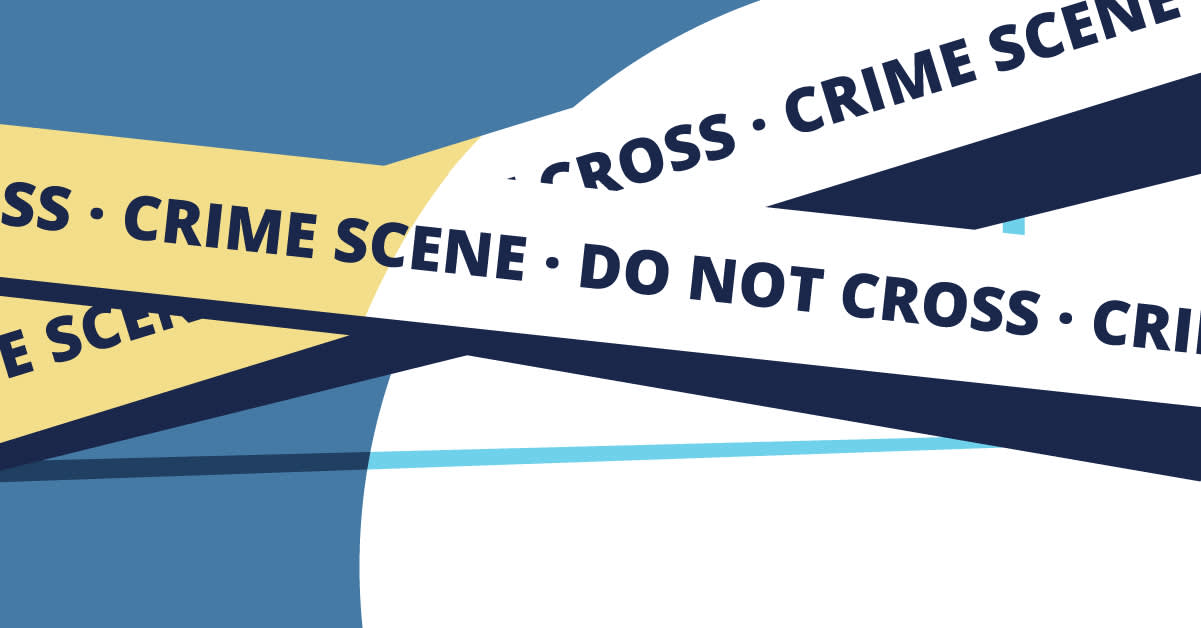Why it’s essential
birthed a genre with his true crime masterpiece about a rural Kansas murder. Hall of Fame narrator Scott Brick’s recording is equally timeless and chilling.
Featured in .
What is In Cold Blood about?
Truman Capote’s true crime classic centers on the 1959 Clutter family murders, in which prominent farmer Herb Clutter, his wife Bonnie, and teenage children Nancy and Kenyon were found shot to death in their Kansas home. Meticulously researched and unforgettably written, explores every angle of the case, from the grisly slayings and their effects on the local community to the psychology, trial, and execution of the perpetrators, Perry Smith and Dick Hickock.
Editor's review
Editor Kat loves anything with shades of horror—from true crime and dark history to existential fiction and actual horror-horror—especially when it manages to sneak in some comic relief along the way.
In Cold Blood was the first true crime book I ever read, and after that, the bar was set. I was a junior in high school and a massive bookworm, though until then I’d read almost exclusively fiction, usually of the Great American Novel variety. For all I knew when I first picked it up, at a thrift shop or take-one/leave-one library where I hunted down cheap books, it WAS fiction, such was the towering reputation of Truman Capote and the breathless description of murder and Americana on the back cover.
Of course, as I now know full well, In Cold Blood is Capote’s 1966 masterpiece of narrative nonfiction—so rich in detail, dialogue, and character that it’s also called a “nonfiction novel”—and the crime it depicts was real, a media sensation in its day. Capote had already published a bestselling debut novel, (1948), and the triumphant novella (1958) when he went to Holcomb, Kansas with his friend to report on the shocking murders of four members of the popular and prosperous Clutter family, inspired by little more than a brief New York Times article calling it “the case of a psychotic killer.” Armed with charm, confidence, and boundless ambition, Capote gained the locals’ trust and soon convinced all the key sources that story was the one they had to be part of.Capote was right. Like a half-century later, ushered in a new kind of true crime storytelling, one that centered both journalistic excellence and the narrative art of fiction. Showcasing Capote’s immaculate prose and intimate access to those involved (particularly convicted killer Perry Smith), the book was an instant success whose reputation has only grown. From its frightening description of the murders—the lonely Clutter farmhouse and open Kansas plain scare me to bits even without the quadruple homicide, thank you—to Capote’s authenticity-soaked regionalisms and atmosphere, is an entire world as seen through the lens of a crime: the random, senseless violence; the hyper-nuanced portraits of the victims and killers, who lives might have turned out some other way, any other way; the peculiar celebrity of murder; the slow machinations of justice and the horror of death row.I will never forget that first time reading it, which transported me from my dorm room in Rhode Island to a Kansas farmhouse, then to a claustrophobic prison cell. More recently I discovered the audio version, a legend in its own right thanks to narrator Scott Brick’s pitch-perfect performance, which seamlessly marries Capote’s haunting authorial voice with homespun prairie-isms (I lost count of all the "I don’t rightly know"s). With chilling precision and palpable respect for the material, Brick captivates as the tale gathers momentum. Depending on where you are when you listen, his performance might even be immersive for comfort.In the Audible Original , Brick relates the story of a reporter who while she was on the road covering Hillary Clinton’s 2016 presidential campaign. While immersed in , the reporter had to stop for fuel very late in the evening. “She pulled into the gas station and looked across the field at what she was the Clutter farm, all lit up in the moonlight,” Brick says. “And she was so terrified by the book that she found it extremely difficult to actually get out of her car and gas up.”As reliably as it scares us, remains a consistent influence on the nonfiction landscape. The journalist Jon Ronson reminded him to treat his own work with ambition, an approach that shines through in Ronson's scrupulously reported podcast, . “I was inspired by Truman Capote to forget about writing a story really quickly and it's going in the paper the next day and it's a scoop,” he says. “Forget about that. What's great is to do something that's going to live for decades.”Marcus Parks, cohost of the long-running , one of the most rigorously researched shows in true crime, has called his biggest inspiration. Speaking about the book for , Parks describes it as “the gold standard”—the book that got him into true crime and taught him everything he knows about the genre. “I go back to it again and again,” Parks says, “just to kind of remind myself that this is how it's done. This is how you do it: you show everything. You do not shy away from anything at all. You show the entire lives of the victims, you show the entire lives of the perpetrators. And you know, for me, that’s the top.”True crime conveys truths about the world that can be hard to hear. But in Capote’s telling and Brick’s performance, beats with beauty, humanity, and propulsive storytelling to keep us listening through the darkness and through the decades.
















